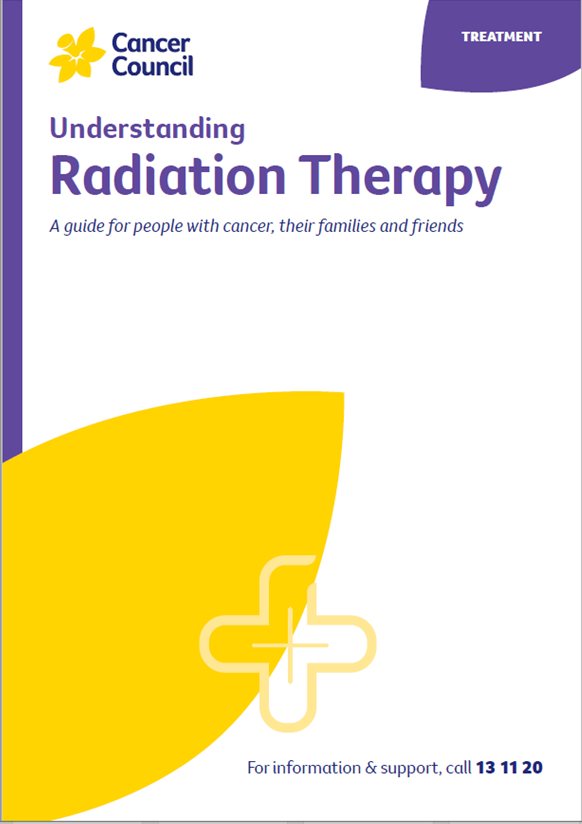- Home
- Thyroid cancer
- Treatment
- External beam radiation therapy
External beam radiation therapy
External beam radiation therapy (EBRT) is only suggested for thyroid cancer that has a high risk of coming back. It may be used if surgery hasn’t removed all the cancer near important structures such as the windpipe.
EBRT may be used for medullary or anaplastic thyroid cancers (which do not respond to RAI). Rarely, it is used as palliative treatment – to relieve symptoms if the cancer has spread.
EBRT directs high-energy radiation beams precisely to the affected area, to kill cancer cells or damage them so they cannot grow, multiply or spread.
Having EBRT
Before treatment, the radiation therapist takes CT scans to work out the exact area to be treated and may make small marks on your skin. This ensures the same part of your body is targeted during each treatment session.
You may be fitted for a plastic mesh treatment mask, to keep you in position so radiation is given to the same area each session. You can see and breathe through the mask, but it may feel uncomfortable, so talk to the radiation therapy team if you feel anxious.
You will lie very still on a table as the machine moves around you but does not touch you. The radiation session is painless, and you won’t feel anything.
Most people have treatment weekdays for one to several weeks. However, treatment is different for everyone – so how often, and for how long you have treatment, can vary. Treatment sessions usually take about 10 minutes, but it can take up to 30 minutes to position the machine correctly.
Side effects
Feeling tired, having difficulty swallowing, having a sore throat, a dry mouth, and red, dry, itchy, sore or ulcerated skin are common side effects with EBRT for thyroid cancer.
For some people, side effects don’t happen right away – they may begin after the first few sessions. Most side effects will go away within a few weeks or months after treatment ends. Your treatment team can help you prevent or manage any side effects if they happen.
Learn more about radiation therapy.
→ READ MORE: Chemotherapy for thyroid cancer
Video: What is radiation therapy?
Watch this short video to learn more about radiation therapy.
Podcast: Making Treatment Decisions
Listen to more of our podcast for people affected by cancer
More resources
A/Prof Diana Learoyd, Endocrinologist, GenesisCare North Shore, St Leonards and University of Sydney, NSW; Sally Brooks, Senior Pharmacist, Peter MacCallum Cancer Centre, VIC; Monica Kwaczynski, 13 11 20 Consultant, Cancer Council WA; Susan Leonard, Clinical Nurse Consultant – Thyroid Cancer, Royal Brisbane and Women’s Hospital, QLD; Juliette O’Brien OAM, Consumer; Jonathan Park, Consumer; A/Prof Robert Parkyn, Breast and Endocrine Surgeon, St Andrew’s Hospital and The Queen Elizabeth Hospital, SA; A/Prof David Pattison, Director, Department of Nuclear Medicine and PET Services, Royal Brisbane and Women’s Hospital, QLD.
View the Cancer Council NSW editorial policy.
View all publications or call 13 11 20 for free printed copies.

